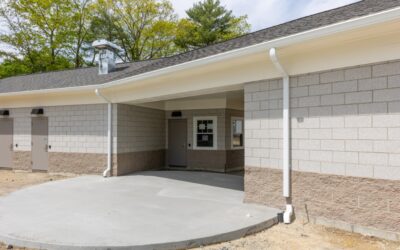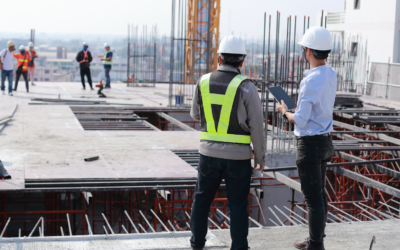Commercial construction projects face a sobering reality: only 35% are completed on time and within budget. The difference between successful projects and costly failures often comes down to one critical factor—thorough construction project planning. At South Coast Improvement, we’ve spent decades perfecting our approach to construction planning, helping commercial developers navigate complex projects while maintaining strict adherence to schedules, budgets, and quality standards.
Effective construction project planning isn’t just about creating schedules and budgets. It’s about establishing a comprehensive roadmap that anticipates challenges, coordinates resources, and ensures every project stakeholder understands their role in bringing your vision to reality. Our client-focused approach has taught us that successful commercial projects require more than technical expertise—they demand a deep understanding of business needs and strategic objectives.
This guide explores the essential elements of construction planning, from initial conceptualization through project closeout. We’ll share insights gained from managing millions of dollars in commercial construction projects, including the renovation of historic buildings, construction of medical facilities, and development of sustainable retail complexes. Whether you’re planning your first commercial development or your fiftieth, these proven strategies will help ensure your project’s success.

Photo by Josh Olalde on Unsplash
The 7 Steps of Construction
Understanding the building process is essential for project managers, general contractors, and commercial developers to allocate resources needed, maintain schedule control, and manage associated costs. While numerous natural sequences exist in construction, our team follows these seven structured steps to ensure structural integrity, safety, and efficiency throughout all the project activities.
Step 1: Conceptualization and Feasibility
Before the project begins, we define the project objectives, assess site conditions, and evaluate regulatory requirements. This involves estimating resource requirements, reviewing project financing options, and determining the appropriate work tasks needed for success. Early construction data collection, cost projections for costs incurred directly, and timeline forecasting help inform go/no-go decisions, ensuring primary emphasis on realistic planning.
Step 2: Design Development (With Construction Planning Software)
Our Design-Build Service Package integrates computer-aided design with construction expertise, aligning specific tasks with buildability from the start. By merging design and construction teams, we streamline technical aspects, reduce miscommunication, and ensure tasks involved are aligned with the budget, project control, and expense-oriented goals.
Step 3: Pre-Construction Planning (Defining Work Tasks)
In this phase, we create detailed resource plans, planning tools like Microsoft Project schedules, and work breakdown structures. The critical task here is establishing timelines, coordinating construction site logistics, and preparing for the implementation phase. This stage also addresses safety performance measures, project control systems, and risk mitigation strategies.
Step 4: Procurement
We secure permits, finalize contracts with subcontractors (ensuring to fill the project team), and source materials using diversified supply channels. Leveraging construction data and past lessons learned, we coordinate just-in-time delivery to the job site and maintain schedule control while avoiding unnecessary associated costs from delays or shortages.
Step 5: Construction
During the implementation phase, our team completes construction activities with continuous oversight. We monitor structural integrity, safety performance, and progress against the project schedule. Project control tools track expenses and resource use, ensuring expense-oriented management of costs incurred directly while keeping all the project activities on track. We’ll also ensure you can track progress of the process, so you never have to worry about being out of the loop.
Step 6: Post-Construction
This step includes inspections, system testing, and client walkthroughs at the construction site. We verify that technical aspects meet building codes and confirm safety performance standards. Any adjustments to appropriate work tasks are handled before final turnover to guarantee structural integrity and client satisfaction.
Step 7: Project Closeout
The team completes final documentation, warranty handovers, and performance reviews. We assess project control metrics, evaluate the efficiency of specific tasks, and gather lessons learned to improve future planning tools and tasks involved. This final step ensures that the building process not only meets current goals but also informs better strategies for future projects.

Photo by Danist Soh on Unsplash
What Does a Construction Plan Include?
A comprehensive construction management plan serves as the project’s blueprint, guiding decision-making throughout the construction process. Based on our experience managing commercial projects, essential components include:
- Project Scope and Objectives: Clear definition of deliverables, success criteria, and business requirements ensures all project stakeholders understand expectations and constraints.
- Project Schedule: Detailed timelines incorporating critical path scheduling procedures help identify dependencies and potential bottlenecks. Construction scheduling software enables real-time updates and scenario planning.
- Budget and Cost Control: Accurate cost estimates, expense tracking systems, and change order procedures prevent budget overruns. Projects using detailed construction management plans are 30% more likely to be completed on schedule.
- Resource Allocation: Identifying resource requirements for labor, equipment, and materials ensures adequate capacity throughout project phases. Resource planning creates accountability and prevents conflicts between concurrent activities.
- Risk Management: Proactive identification of potential issues and contingency planning helps mitigate unforeseen challenges. Our experience with unexpected site conditions has taught us that thorough site investigations and contingency budgets are essential.
- Quality Control: Specifications, inspection schedules, and acceptance criteria ensure work meets project standards and regulatory requirements. Commercial projects that adhere strictly to building codes have 20% fewer safety incidents.
Communication Plan: Regular reporting, stakeholder meetings, and documentation procedures keep everyone informed and aligned. We’ve found that implementing project management software with communication features prevents the breakdown that often derails projects.
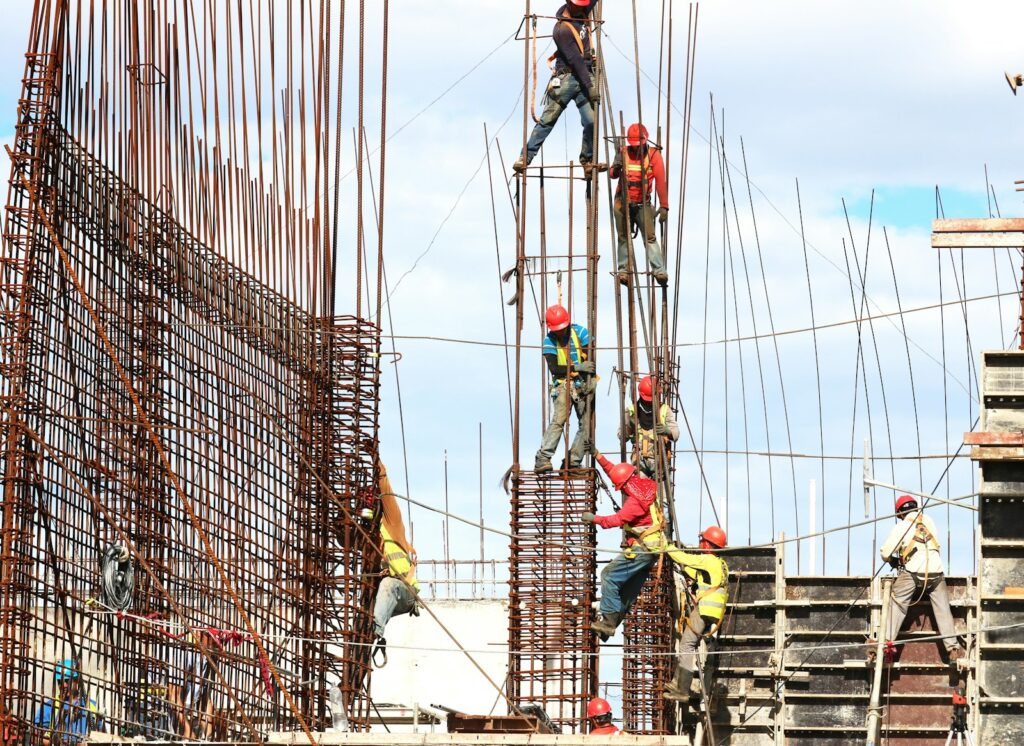
Photo by Josue Isai Ramos Figueroa on Unsplash
What Are the Stages of Construction Planning?
The construction planning process follows established project management principles adapted for the construction industry’s unique requirements:
- Initiation Phase: Project authorization, stakeholder identification, and high-level requirement gathering establish the foundation for detailed planning. Strategic planning during this phase sets the tone for project success.
- Planning Phase: Detailed work breakdown structures, resource planning, and schedule development occur during this stage. The planning process typically represents 10-15% of total project duration but significantly impacts overall success rates.
- Execution Phase: Active construction begins, requiring constant coordination between the construction team and project management team. Regular progress monitoring ensures adherence to the construction schedule and budget targets.
- Monitoring and Controlling Phase: Ongoing performance measurement, quality assurance, and change management maintain project alignment with established objectives. Key performance indicators help identify issues before they impact critical paths.
- Closing Phase: Project completion activities, final inspections, and documentation handover conclude the construction planning process. Post-project evaluation provides insights for improving future planning efforts.
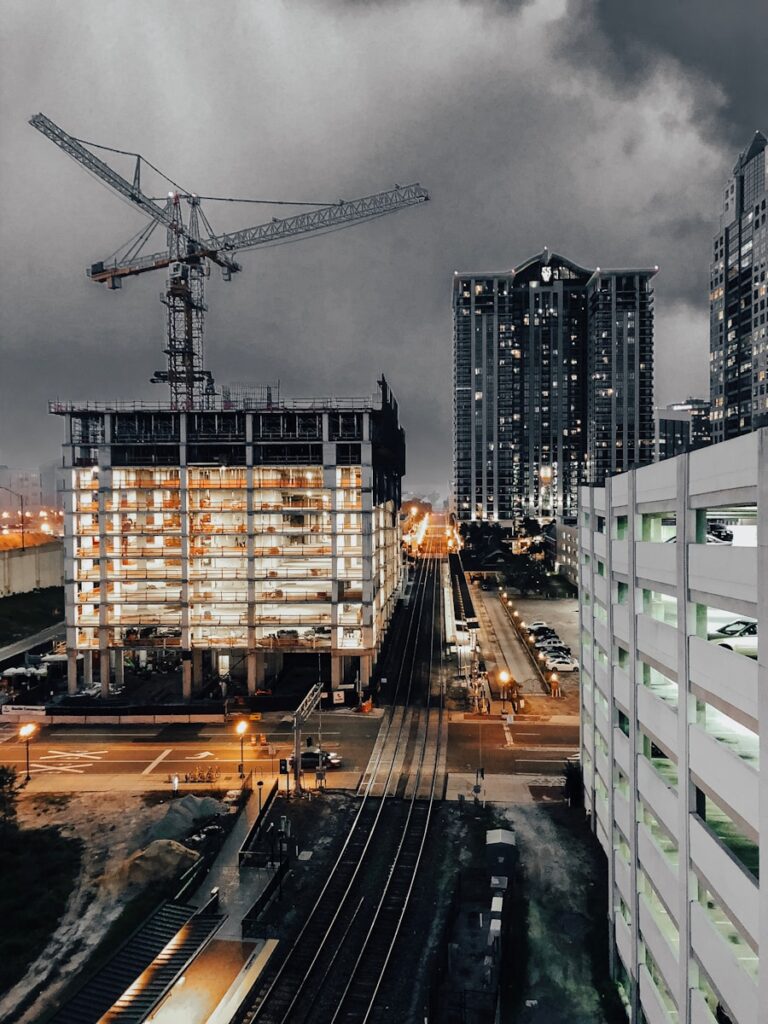
Photo by Nathan Waters on Unsplash
What Are the 7 Steps of Project Planning?
Effective project planning requires a systematic approach to defining work tasks and managing project activities:
Define Objectives
Clear, measurable goals aligned with business needs provide direction for all project activities. We spend considerable time understanding client requirements before proposing solutions.
Establish Scope
Detailed scope definition prevents scope creep while ensuring all necessary work is included. Our experience has shown that unclear scope boundaries are the primary causes of budget overruns and schedule delays.
Create Work Breakdown Structure
Breaking complex projects into manageable tasks enables accurate estimating and resource planning. This systematic approach helps identify all project activities and their interdependencies.
Develop Schedule
Critical path analysis and resource-constrained scheduling create realistic timelines. Construction scheduling software helps visualize dependencies and optimize resource utilization.
Allocate Resources
Matching resource requirements with availability ensures adequate capacity for project completion. Resource planning considers both internal capabilities and subcontractor availability.
Assess Risks
Systematic risk identification and mitigation planning prepare teams for potential challenges. Our risk management approach includes technical, financial, and regulatory considerations.
Obtain Approval
Final review and authorization from project stakeholders provide a clear mandate for project execution. This step ensures alignment before significant resource commitments begin.
How South Coast Improvement Ensures Successful Construction Project Planning
Our approach to construction project planning reflects decades of experience managing complex commercial projects. We’ve refined our processes based on real-world challenges and client feedback.
Client-Focused Approach
We begin every project by understanding business objectives and operational requirements. This understanding shapes our construction management plan and ensures solutions align with client needs. Companies that offer streamlined Design-Build Service Packages report 25% increases in client satisfaction.
Expertise in Handling Project Issues | We Maintain the Construction Schedule No Matter What!
Our construction team’s experience enables rapid problem-solving when unexpected challenges arise. Whether dealing with unforeseen site conditions, regulatory compliance issues, or material shortages, we implement proven solutions that minimize project impact.
Adherence to Building Codes and Regulations | Our Construction Team Knows What We’re Doing
Strict compliance with local regulations ensures project safety and reduces liability. Our expertise in regulatory requirements prevents costly delays and rework often experienced by less experienced contractors.
Streamlined Design-Build Service Package | The Ultimate Construction Management Plan
Our integrated approach eliminates traditional conflicts between designers and builders. Single-source accountability improves communication and reduces the finger-pointing that often occurs when problems arise.
Proven Track Record On Numerous Commercial Projects
Our portfolio demonstrates success across diverse commercial project types:
- Renovation of a historic building into modern office spaces, balancing preservation requirements with contemporary functionality
- Construction of a state-of-the-art medical facility, emphasizing regulatory compliance and operational efficiency
- Development of a sustainable retail complex showcasing eco-friendly practices and innovative design solutions
- Completion of a large distribution center demonstrating logistical efficiency and on-time delivery
Implementing construction planning software has reduced our project costs by up to 15% while improving schedule predictability and client communication.
Building Success Through Strategic Planning | The Ultimate Finished Project
Effective construction project planning distinguishes successful commercial developments from costly failures. The construction industry’s complexity requires systematic approaches that address technical, financial, and regulatory requirements while maintaining focus on business objectives.
Our experience managing millions of dollars in commercial construction projects has reinforced the importance of thorough planning, proactive communication, and adaptable problem-solving. The construction planning process may seem time-consuming initially, but projects with comprehensive planning consistently outperform those that rush into construction without adequate preparation.
Commercial developers who invest in proper construction project planning see measurable returns through reduced costs, shorter schedules, and higher-quality outcomes. The key lies in partnering with experienced professionals who understand both construction complexities and business realities.
Ready to discuss your next commercial project? Contact South Coast Improvement for a consultation. Our construction team will work with you to develop a comprehensive construction management plan tailored to your specific needs and objectives. Let our experience guide your project from concept to successful completion.
Learn More: Construction Planning—Ensuring Success from Start to Finish
Explore these trusted resources to guide your construction project through every critical phase—from vision-setting to execution and evaluation.
What Is Construction Planning & Why It Matters
- Autodesk – What Is Construction Planning? The Steps for Success | Defines construction planning as the foundational phase that integrates all project activities within budget and time constraints—key for monitoring and evaluation.
Define Goals, Scope & Feasibility
- P‑C Construction – Essential Steps for Successful Commercial Construction Planning | Emphasizes setting clear project objectives and maintaining communication for smooth execution.
- AscendOK – Essential Steps in Planning a Commercial Construction Project | Focuses on establishing a unified vision and goals by collaborating with all stakeholders.
- Claris Design•Build – How to Plan a Commercial Building Construction Project (Step‑By‑Step) | Delivers a systematic roadmap: define requirements, budget, team, site assessment, permitting, timelines, procurement, and execution.
Preconstruction Essentials
- LWG Inc – An Essential Guide to Preconstruction Planning | Highlights preconstruction’s role in aligning objectives, scheduling, and risk mitigation before build begins.
Project Phases & Structures
- Buildertrend – Construction Planning Best Practices [2024] | Outlines the five key planning steps: initiation, planning, execution, monitoring, and closing, emphasizing realistic timelines and proactive communication.
- ShareFile – 5 Construction Project Phases: Insights & Best Practices | Offers a clear breakdown of each project phase with practical guidance.
- Maxx Builders – Commercial Buildings: Step‑by‑Step Guide | Walks through feasibility, design, planning, budgeting, and execution for commercial builds.
Planning Tools & Methodologies
- ProjectManager.com – Ultimate Guide to Construction Project Management | Delivers a comprehensive walkthrough—from the construction PM structure and team roles to planning, scheduling, delivery models, and scheduling tools.
- Procore – Ultimate Guide to Construction Scheduling | Explains scheduling principles, methods, and how to resolve common scheduling challenges.
Best Practices for Execution & Oversight
- A‑Street Partners – Construction Project Management Best Practices | Recommends defining clear scope, prioritizing safety, maintaining strong communication and documentation, and using software tools.
- Visual Planning – Ensure Project Executed Successfully | Provides five pillars: scope clarity, milestone tracking, effective communication, digital progress monitoring, and precise paperwork management.
View Our Work
The Overlook – Masonic Health System
"We’re honored to have partnered with The Overlook on this transformative initiative. Our team brought specialized expertise in working within occupied senior living communities, delivering a seamless renovation that aligns with The Overlook’s exceptional standards of...
Hamilton Wenham
Their team was collaborative, responsive, and committed to our shared vision for this space, -Eric Tracy Superintendent, Hamilton-Wenham Regional School District We partnered with the Hamilton-Wenham Regional School District to deliver a brand-new athletic building...
